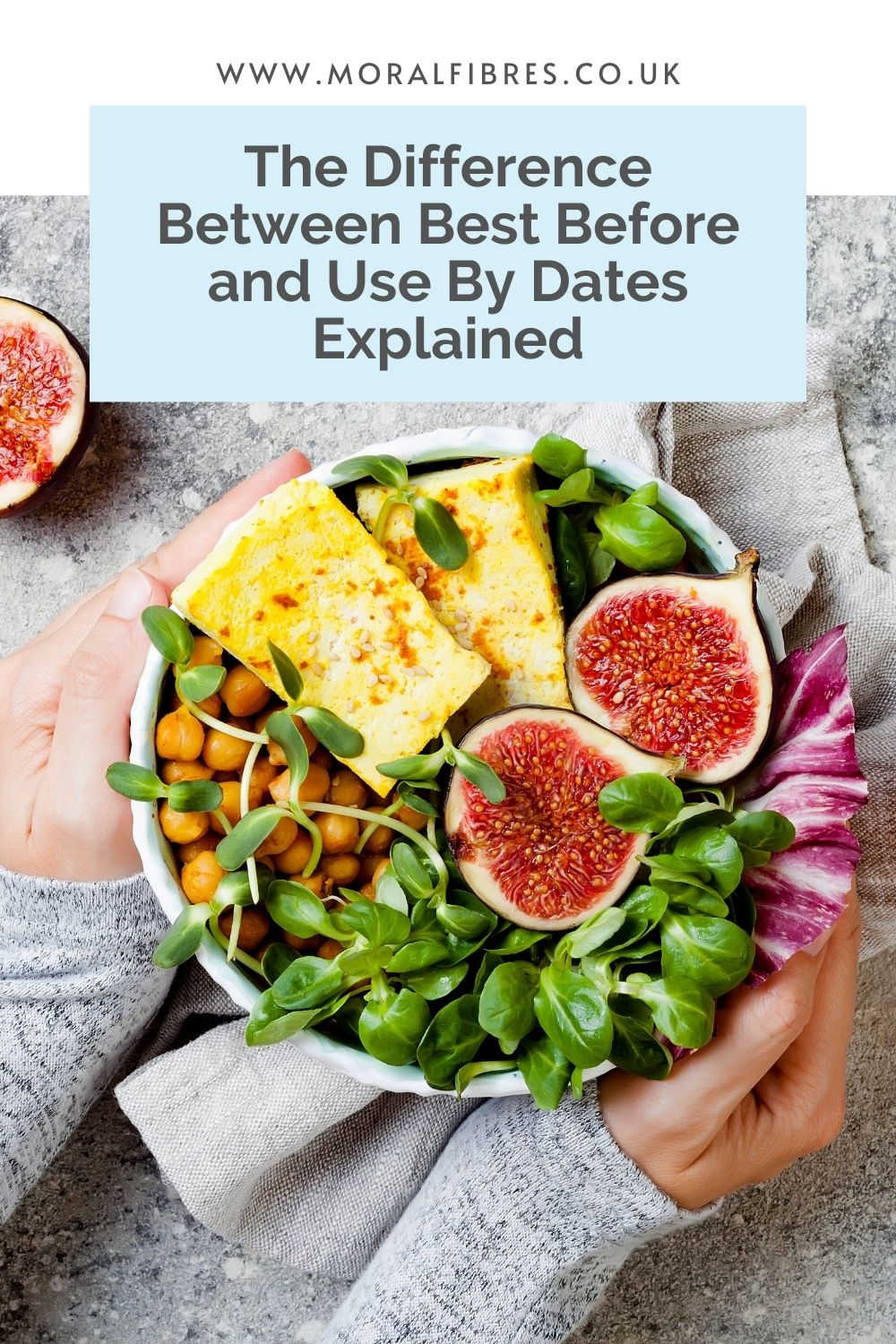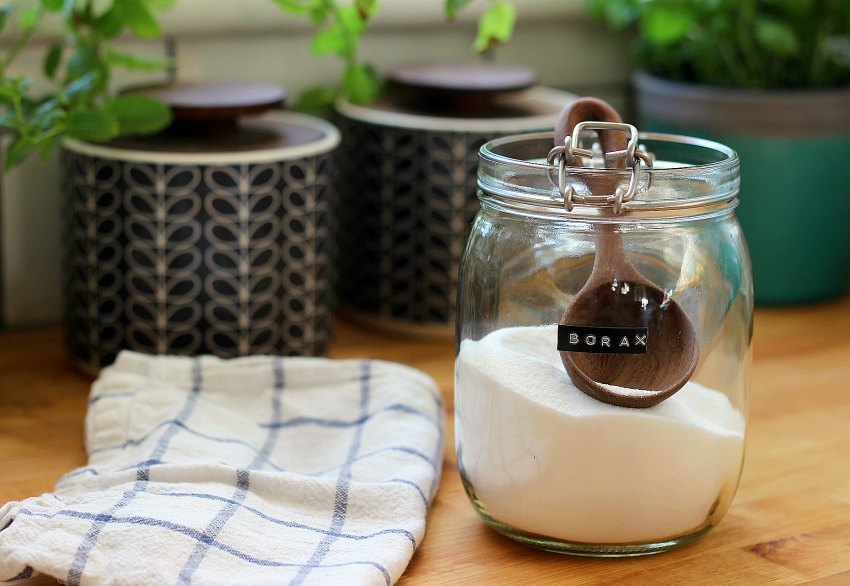The Difference Between Best Before & Use By Dates Explained
To support the running costs of Moral Fibres, this post may contain affiliate links. This means Moral Fibres may earn a small commission, at no extra cost to readers, on items purchased through these links.
Confused by food labelling? Let me explain the meaning and the difference between best-before and use-by dates, to help you cut your food waste.
I’m big on cutting food waste. Not only does it make good financial sense to reduce the food we waste, but it also makes good environmental sense. In the UK alone, food waste accounts for between 6 to 7% of our total greenhouse gas emissions. This is because when food waste decomposes it releases greenhouse gases into the atmosphere.
In fact, it’s estimated by the Waste and Resources Action Programme (WRAP) that if every UK household stopped wasting food for one day, it could do the same for greenhouse gas emissions as planting 640,000 trees per day. This is around a staggering 230 million trees per year.
Food is also extremely resource-intensive to produce. If you’ve ever tried to grow your own food before, you’ll know just how hard it is to grow food. And not only that, but how much effort, resources, and water go into growing small amounts of food.
On a much larger scale, the Carbon Trust says that for every tonne of food not wasted, the needless loss of 1,525,000 litres of water needed to produce that food will be avoided.
One way to cut food waste is to get a good handle on what the different dates on the food we buy mean. One scientific study found that as much as 84% of shoppers are confused by expiration dates. This means a huge amount of edible food is being binned daily.
Table Of Contents
What Is the Difference Between Best Before And Use By Dates?

It’s useful to know about expiration dates to avoid food waste. Avoiding food waste not only saves money but helps the environment too. This is in terms of the resources used to grow, make and transport food. And it’s also in terms of those greenhouse gas emissions that fuel climate change.
Food safety regulations require dates on foods to indicate their shelf-life. This is determined by one of two dates:
- The date of minimum durability – known as the ‘best before’ or ‘best before end’ date.
- The food safety date – known as the ‘use by’ date.
Here’s what these terms mean in more detail:
What Does The Best Before Date Mean?
The Best Before date (sometimes displayed as BBE, meaning Best Before End) relates to food quality rather than lifespan.
When the date runs out, it doesn’t mean that the food will be off or unsafe to eat. Instead, it means that beyond this date, the item is not guaranteed to be at its optimum freshness. So, beyond this date, the taste, appearance, or other attributes of the foodstuff may not be at its very best.
Generally, if the food has been stored correctly, looks okay, smells okay, and tastes okay after its best-before date then it’s good to eat.
A good example of this in practice is bread. After the best-before date, the bread goes a little stale. It’s perfectly ok to eat stale bread. You may prefer to toast the bread to make it taste better, but it won’t make you ill. However, as soon as the bread develops mould that’s a very visible sign that the bread is no longer safe to eat.
Do note that the best-before date only applies when the item has been stored in accordance with the storage instructions and it has not been opened. Once opened, it should be cooked and eaten as per the instructions printed on the pack, and any leftovers stored as instructed.
And What Does The Use By Date Mean?
Use by dates are most commonly found on fresh foodstuffs. These include items such as meat, dairy products, or pre-prepared food, such as soups, packaged salads, spreads, and dips.
In contrast to the best before date and its relation to food quality, the use by date relates to food safety. This means that you can cook, eat and freeze food up until and on the use-by date but not after. After the displayed date, it is highly likely that the food will be off and could make you sick.
However, do bear in mind that the use-by date is only valid if the storage instructions printed on the packaging have been followed. For example, if an item says to keep refrigerated, then it must be stored in your fridge.
If the item is left sitting out at room temperature for an extended period, then there is a risk that it will go off before the use-by date. For anything that has been stored out of the fridge for an extended period, I would discard this food, even if it is before the printed date on the packaging.
The only time the use-by date does not matter is if the item has been frozen after purchasing the item, and the item was still in date when it went into the freezer. In this case, its life will be extended well beyond the use-by date. This could potentially be for up to one year depending on the item or freezing instructions on the packet.
However, it is important to remember that you should not freeze an item after its use-by date has passed.
What About Display Until Dates?
Ignore ‘display until’ dates. These dates don’t relate to food freshness or quality. Instead, they are used by some shops to help with their stock control and are not aimed at consumers. Instead, look at the use-by or best-before dates to help guide you.
Food Safety
If you’re in any way concerned about food safety then don’t eat the food in question. How an item looks and smells are good indicators of quality. If something looks or smells bad, then it probably is off, even if it is within the expiration date. Nothing is ever worth a nasty bout of food poisoning.
The Bottom Line
Food labels might seem like they mean the same thing, but taking a little time to learn the difference between best before and use by can help you cut your food waste and save money on your food shopping. Just remember. if you ever have doubts about the safety of food, trust your senses and err on the side of caution.
If you’re looking for more food waste tips then do have a rummage in my food waste archives. I’ve got loads of clever tips here, to help you save money and cut your food waste.
Found this post useful? Please consider buying me a virtual coffee to help support the site’s running costs.




